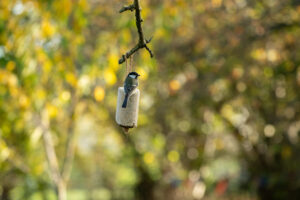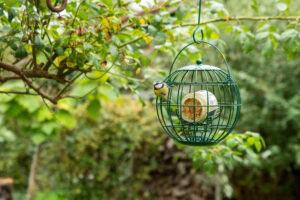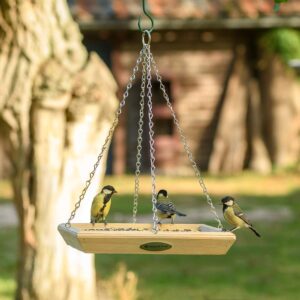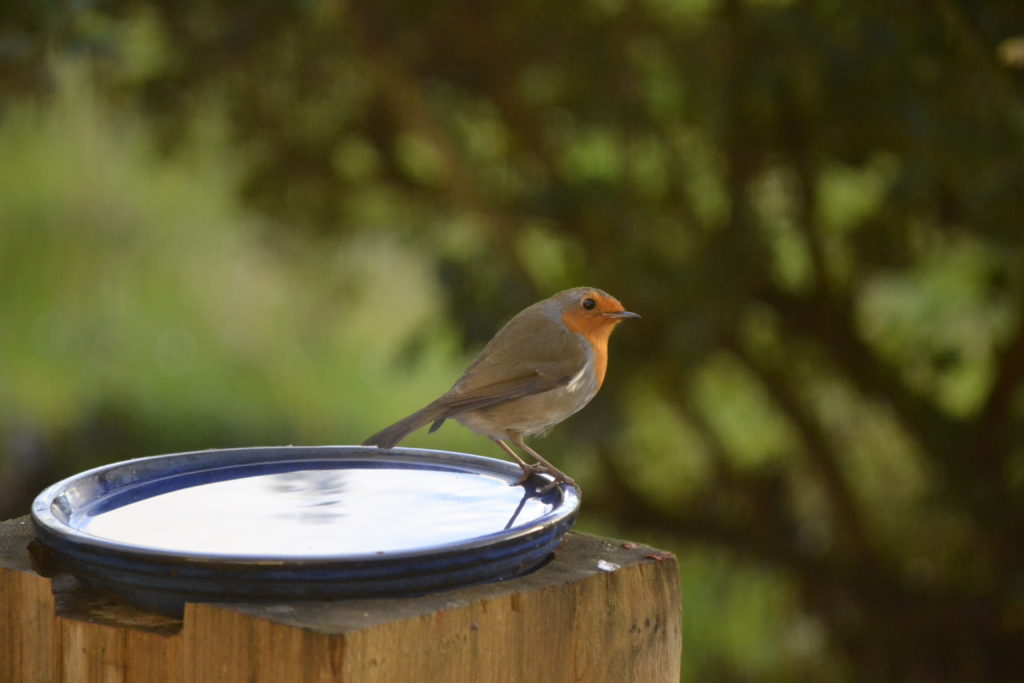Feeding your garden birds through the summer
Many people naturally assume that garden birds don’t need our help during the summer months. After all there is an abundance of natural food like insects, bugs, grubs and berries for them to satisfy their feeding requirements.
However, the summer can, and usually does, throw up some testing weather anomalies which can have a significant effect on the supply of these natural stores of food. Prolonged periods of drought will harden the ground, forcing worms to move deeper into the soil in search of moisture, whilst thunderstorms with heavy downpours will have an impact on the flying insect numbers, and caterpillars, which can be washed off trees and bushes.

Another major impact on the population of these natural foods is the continual development of our land. Housebuilding, road building, the massive commercial warehouses springing up all over the countryside and the expansion of our towns and cities is having a major impact on the habitats our garden birds depend on, so it is vitally important for us to lend a hand and keep our feeders topped up throughout the summer months.
Many of our garden bird species will lay more than one clutch of eggs, some from early March through to late August, so the parent birds will be working extremely hard during this time with nest building and maintenance, feeding young chicks (some species will feed their young up to 100 times a day), defending the nest from predators and in late summer building up reserves of energy for moulting (shedding and regrowing feathers).

Once the eggs have hatched, the feeding process begins in earnest, with many hungry beaks to fill. It is exhausting for the parent birds as they will be mainly hunting for natural food to feed their young. At this time the parent birds will visit our feeders to replenish themselves, saving the natural food for their chicks. Offering a high energy mix of food, such as sunflower hearts, peanuts (only in specialist feeders), kibbled peanuts (for ground & table feeding), a selection of suet products and mealworms is of great benefit. Also ensure there is fresh water available near the feeders, which should be refreshed every day.
Once the chicks have fledged, the parent birds will start teaching them how to search for, and find, all the different varieties and locations of the food they will need to survive, including the food we provide. It is fascinating to observe they way the parent birds teach their chicks how to use our feeders.
Are we making our garden birds dependent on feeders? Absolutely not. Garden birds only ever use our feeders as a small part of their daily routine, this is why you often have a flurry of activity around your feeders and at other times of the day, not a single bird to be seen. It is estimated that garden birds get somewhere between 10% and 25% of their daily nutritional requirements from the food we offer to them.

The key to feeding our garden birds is to offer a variety of food in a variety of different ways. Some birds will prefer to feed on hanging feeders whilst others prefer feeding on the ground or a flat surface. Specialist feeding stations are gaining popularity as they offer all these options in one simple system. Hooks to hang feeders on for seed mixes, sunflower hearts, whole peanuts, energy balls and suet blocks, a small ground table for ground feeding birds in which you can put mixed seeds such as robin & songbird mix or ground and table mix, plus a water dish.
Finally, another great reason to keep feeding your garden birds throughout the summer – you will see more birds! Happy birding everyone.

